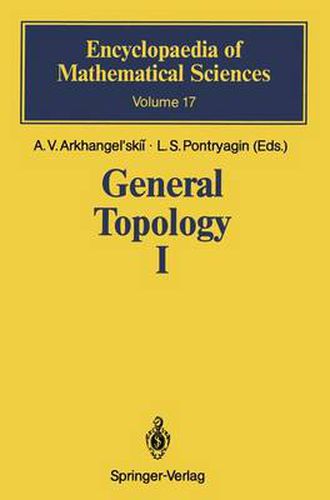Readings Newsletter
Become a Readings Member to make your shopping experience even easier.
Sign in or sign up for free!
You’re not far away from qualifying for FREE standard shipping within Australia
You’ve qualified for FREE standard shipping within Australia
The cart is loading…






This title is printed to order. This book may have been self-published. If so, we cannot guarantee the quality of the content. In the main most books will have gone through the editing process however some may not. We therefore suggest that you be aware of this before ordering this book. If in doubt check either the author or publisher’s details as we are unable to accept any returns unless they are faulty. Please contact us if you have any questions.
General topology is the domain ofmathematics devoted to the investigation of the concepts of continuity and passage to a limit at their natural level of generality. The most basic concepts of general topology, that of a topological space and a continuous map, were introduced by Hausdorffin 1914. Oneofthecentralproblemsoftopologyisthedeterminationandinvestigation of topological invariants; that is, properties ofspaces which are preserved under homeomorphisms. Topological invariants need not be numbers. Connectedness, compactness, andmetrizability,forexample,arenon-numericaltopologicalinvariants.Dimen- sional invariants, on the otherhand, areexamplesofnumericalinvariants which take integervalues on specific topological spaces. Part II ofthis book is devoted to them. Topological invariants which take values in the cardinal numbers play an especially important role, providing the raw material for many useful coin putations. Weight, density, character, and Suslin number are invariants ofthis type. Certain classes of topological spaces are defined in terms of topological in- variants. Particularly important examples include the metrizable spaces, spaces with a countable base, compact spaces, Tikhonov spaces, Polish spaces, Cech- complete spaces and the symmetrizable spaces.
$9.00 standard shipping within Australia
FREE standard shipping within Australia for orders over $100.00
Express & International shipping calculated at checkout
Stock availability can be subject to change without notice. We recommend calling the shop or contacting our online team to check availability of low stock items. Please see our Shopping Online page for more details.
This title is printed to order. This book may have been self-published. If so, we cannot guarantee the quality of the content. In the main most books will have gone through the editing process however some may not. We therefore suggest that you be aware of this before ordering this book. If in doubt check either the author or publisher’s details as we are unable to accept any returns unless they are faulty. Please contact us if you have any questions.
General topology is the domain ofmathematics devoted to the investigation of the concepts of continuity and passage to a limit at their natural level of generality. The most basic concepts of general topology, that of a topological space and a continuous map, were introduced by Hausdorffin 1914. Oneofthecentralproblemsoftopologyisthedeterminationandinvestigation of topological invariants; that is, properties ofspaces which are preserved under homeomorphisms. Topological invariants need not be numbers. Connectedness, compactness, andmetrizability,forexample,arenon-numericaltopologicalinvariants.Dimen- sional invariants, on the otherhand, areexamplesofnumericalinvariants which take integervalues on specific topological spaces. Part II ofthis book is devoted to them. Topological invariants which take values in the cardinal numbers play an especially important role, providing the raw material for many useful coin putations. Weight, density, character, and Suslin number are invariants ofthis type. Certain classes of topological spaces are defined in terms of topological in- variants. Particularly important examples include the metrizable spaces, spaces with a countable base, compact spaces, Tikhonov spaces, Polish spaces, Cech- complete spaces and the symmetrizable spaces.